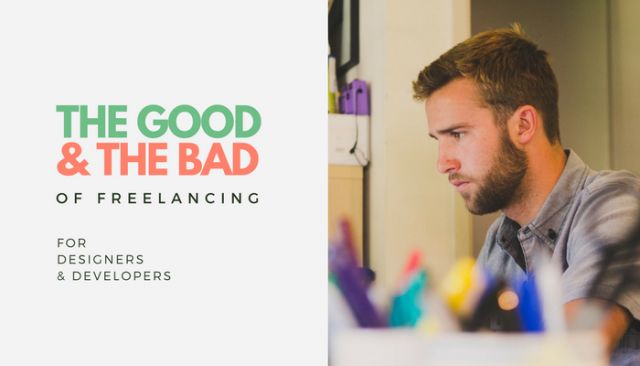Working in the tech sector provides a wide range of opportunities for career growth and personal development that many other industries generally fail to distribute. Constant workflow consistent of a variety of engaging projects is just a small portion of what a job as a designer or developer can get you.
The innovations in the IT industry allow tech companies to conduct human resource researchers and hire workforce outside the region of establishment of their offices. Companies have started revealing the benefits of hiring freelancers rather than in-house workers and today, job hunting and labour hire are no longer restricted to specific locations. This opens many new horizons for telecommute working and leads to the expansion of the freelance industry. But the question still remains, is freelancing really a lucrative opportunity?

Social Aspects
Since freelancing can be performed from any point of the world it doesn’t necessarily require freelancers to stay at home. Yet, a large portion of remotely hired staff claims freelancing can be rather lonely. To avoid the dullness of working in a socially deprived setting, many freelance designers and developers now perform their projects at co-working spaces. Even tho they successfully manage to recreate the buzzing, lively atmosphere of an office, co-working spaces are populated by independently working specialists who won’t necessarily collaborate on projects but will share opinion and ideas along the way. This makes the freelancing sector a welcoming place for self-reliant developers and designers who respect their personal space and prefer to work autonomously rather than share tasks and responsibilities within a group.
Work-Life Balance
Since freelancing offers work time flexibility, the large portion of the industry is taken by moonlighters who prefer to keep their full-time job and perform freelance work on the side in the late hours of the day. This turns having a healthy work-life balance almost impossible, thus, sometimes creating a false impression that freelancing takes up more time than an 8-hour work day. Full-time freelancers who enjoy working from the comfort of their own home often share their schedule allows them to spend more time with families and close ones in comparison to when they were working at a nine-to-five job. Whether you’re a designer or developer, managing your own freelance business will, of course, require you to perform additional organization and management duties, like filing paperwork and paying extra bills. These are all tasks that your permanent employer company will basically do for you when you get hired full-time. Still, most of these additional duties, like accounting and even personal assistance with various tasks can be delegated to external B2B companies and freelance service providers once a more stable income flow is established.
Flexibility vs Stability
Many would argue that the perks of choosing your own work hours can hardly outweigh the stability in workflow that an agency-based job can provide. Yet, a third of the Australian freelance workforce consistent of 3.7 million people claim independent working provides more financial benefits in comparison to being permanently hired at a local agency. Full-time jobs provide financial stability, consistency in workflow, and regular monthly payment. These benefits are considered to be impossible to find in the freelance industry. Yet, half of the freelancers claim they can find a design or development project within three days of their search. The new emerging startups in the freelance industry and remote hiring platforms, like Workfast, are only making this easier. The constant development of the freelancing and tech industry helps freelance designers and developers find on-demand work. It also assists businesses in hiring the right candidate for their projects. Yet, freelancing does require an extra effort in building a professional portfolio and advertising your services to prospective clients that are interested in web development or graphic design. This task can be entirely avoided by opting for a permanent employment.
